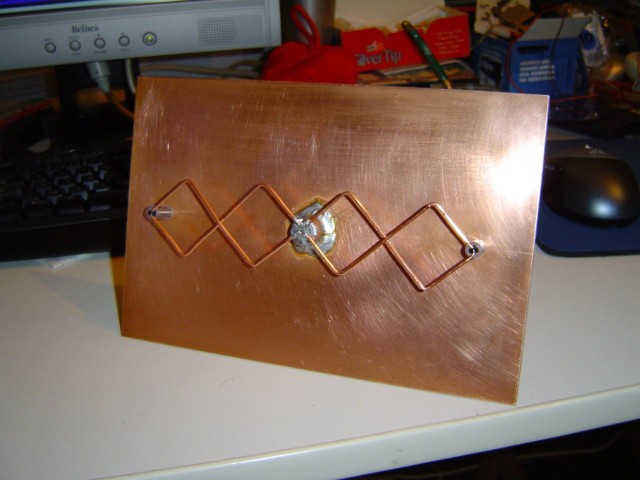

Then feed in a unmeasured amount of either enamel coated magnet wire, or some of the core of the RF cable. I personally punch a small hole in the right spot with a thumbtack. I prefer the smallest break into the can possible. Now (and this is more of a personal thing) but I UTTERLY DESPISE using a connecter on the can it's self. Which as I said before, is why I use USB dongles as close to the antenna as possible.

I guess they all assume that a person *BUILDING AN ANTENNA FROM OLD TIN CANS* is going to spend lots of money on good lengths of high quality RF coax. I think to myself, "That's Great!!! But your forgot to mention that there is really strict criterion for 2.4Ghz feed cables". Most guides just say, "use 'this' connecter on your antenna, then hook it to your WiFi device". For example, something I have another thread for is RF cable substitution. But then again, some things are also completely forgivable since they are not often in the instructions from the start. Such as, measuring from the BOTTOM of the can instead of the INSIDE BOTTOM when placing the probe. Or underestimate how important the measurements really are. Or not account for the little overhang of the connecter.
#Triple biquad wifi antenna install#
Most of the time I see people measure the probe, THEN install it in the can. I also agree that the average cantenna is built to a crappy standard. you can't feed a dish with one of these, lol. (though having to align 50 yagi elements does seem like a pain). However infrequency of good samples makes it appear like they are hard to build altogether, not that it's a problem for *ME* since I can "solder wood to plastic".

This is the main reason I use USB dongles.Īs for phased loop yagis, I find them quite interesting but most I have seen on the web were built crappy. That way there is no cable carrying RF to worry about at all, even if they do come with the right cable. I prefer the radio device to be as close to the focus point as possible. Though I do dislike how they are fed signal.

I don't completely dislike the cookie cutter grid parabolic dishes that are out there in the wild. So I like to take in to account the best and worst case scenarios and get every ones opinions.Īny input on this would be helpful for more than just me. (well, short from the dongle RSI values and careful observations of network integrity) And radio is finicky at best when it comes to home made IMO. But better with which feed is best? And when compared, which out preforms what when built right vs being built wrong? I don't exactly have a 2.4Ghz analysis lab at my disposal to do the tests myself. Obviously the dish with a built right feed is the best choice for the longest range possible. (Edit: My opinion and questions on the matter) ("cookie cutter" as in, they are all "stamped out" and look the same) Ĩ: A manufactured "Cookie cutter" grid parabolic. Which in your opinion would be better/best for LONG range Wifi?Ģ: A Home made Bi-Quad built slightly wrong.Ĥ: A Home made cantenna built slightly wrong.ĥ: All the above as a feed for a large parabolic dish.Ħ: A Home made phased Loop Yagi Built perfectly.ħ: A Home made phased Loop Yagi Built slightly wrong. And in doing so I came up with an interesting quandary. OK, been building antennas for extending my WiFi even farther recently.


 0 kommentar(er)
0 kommentar(er)
